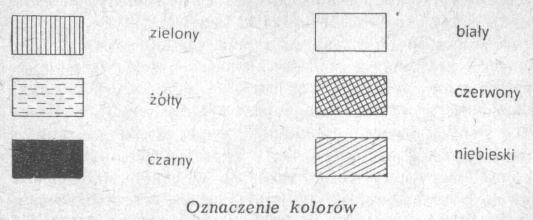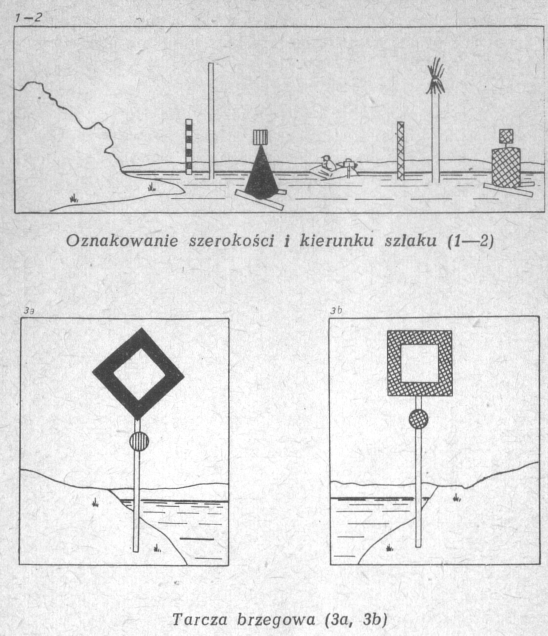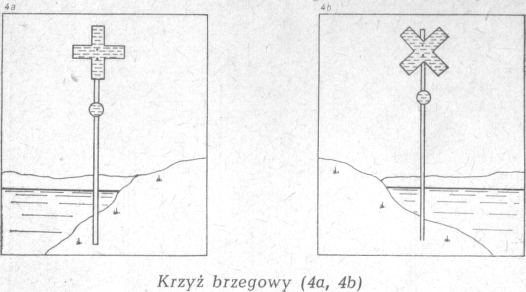ORIENTATION ON THE WATER AND ON THE TERRAIN OBSTACLES ON THE TRAIL
Before setting off on a trip, every canoeing tourist should gather as much information as possible, not only about the trail, intends to go, but also about the region, in which this water route is located.
We should be interested in the shape of the area of this region, hydrographic relations (Lakes, the river, rivers, channels, their interconnection and location in relation to the water route chosen by us for the trip), flora and the animal world - nature reserves and monuments, their location and possible sightseeing. We will also be interested in historical towns, architectural monuments, places of national remembrance, transformations, which took place during the Polish period.
We get most of this information by studying tourism and sightseeing literature. Therefore, it is advisable to plan your hike in advance, so that you have time to get these messages. In addition to guidebooks and reference books, we can obtain a lot of valuable data by studying maps. the terrain, on which we are to spend our journey. Tourist maps are sufficient for this purpose, commercially available. (“Suwałki-Augustów Lakeland”, "Great Masurian Lakes”, "Baltic Coast" and others). More detailed maps can be found in the libraries with the maps section, of course meeting the conditions imposed on those who use them. A canoeing tourist must have many skills, not only in boating. After all, he is in a sense a romantic trapper and feels confident both on the water, as well as on land. Therefore, he should have basic knowledge and skills in the field of topography, so correctly judge the distance, determine the sides of the world without the help of a compass, determine the time without a watch, make a simple field sketch. In addition, be aware of and apply the provisions of nature protection and the regulations applicable to anglers. By spending most of the day on the water, a canoeing tourist must feel safe and confident on it. Meeting both of these conditions requires the ability to "read water."” tj. drawing the right conclusions from observing the water surface and banks.
For this, it is necessary to learn the following concepts:
River bed - the space between its banks.
Water table - this is the surface of the water in a river or lake.
Signs indicating the current and special obstacles on it

1. Baken floating on water (buoy; Lynx. 1—2)
a. right side - red,- rhythmic red light at night
b. left side - black; rhythmic green light at night
2. Tyki or panicles (placed on regrinds; Figure 1-2)
a. right side - red and white or not debarked with panicle
b. left side - black and white or peeled without panicle

3. Edge shield
a. left side - a white square board in black framed with one corner downwards; at night, rhythmic green light with an odd number of flashes or constant white light (Lynx. 3a)
b. right side - white square board with red borders, fixed horizontally; at night, rhythmic red light with an even number of flashes or constant white light (Lynx. 3b)
4. Border cross
a. right side – a yellow cross mounted on a pole, with one arm down - means moving from the right bank to the left bank; at night - board marked with yellow rhythmic light, with an even number of flashes, or lit by white light (Lynx. 4a)

b. left side. - a yellow cross-shaped shoreline, set on a pole with two arms downwards - marks the passage of the navigable route from the left bank to the right bank; at night - board marked with yellow rhythmic light, with an odd number of flashes, or lit by white light (Lynx. 4b)
5. Bifurcation of the navigable route
a) red with horizontal black stripes floating baken (buoy) ball-shaped; at night, the baken is indicated by a white flashing light (Lynx. 5a)
b) a red and black boundary board in the shape of two isosceles triangles, with their vertices facing each other; at night - a board marked with a white flashing light or illuminated with a white light (fig 5b)
